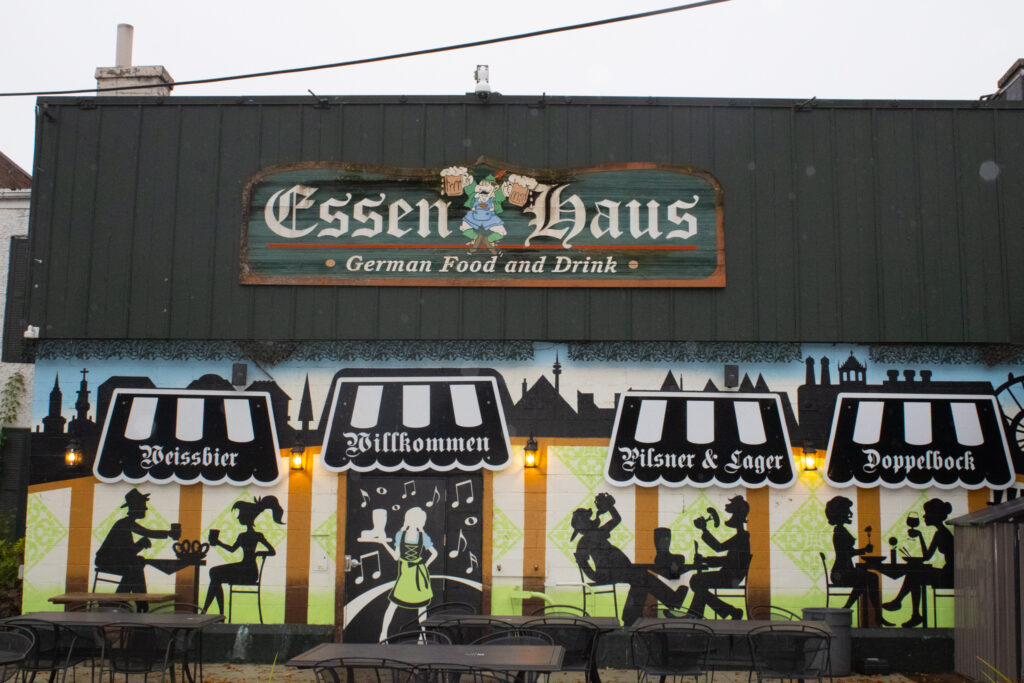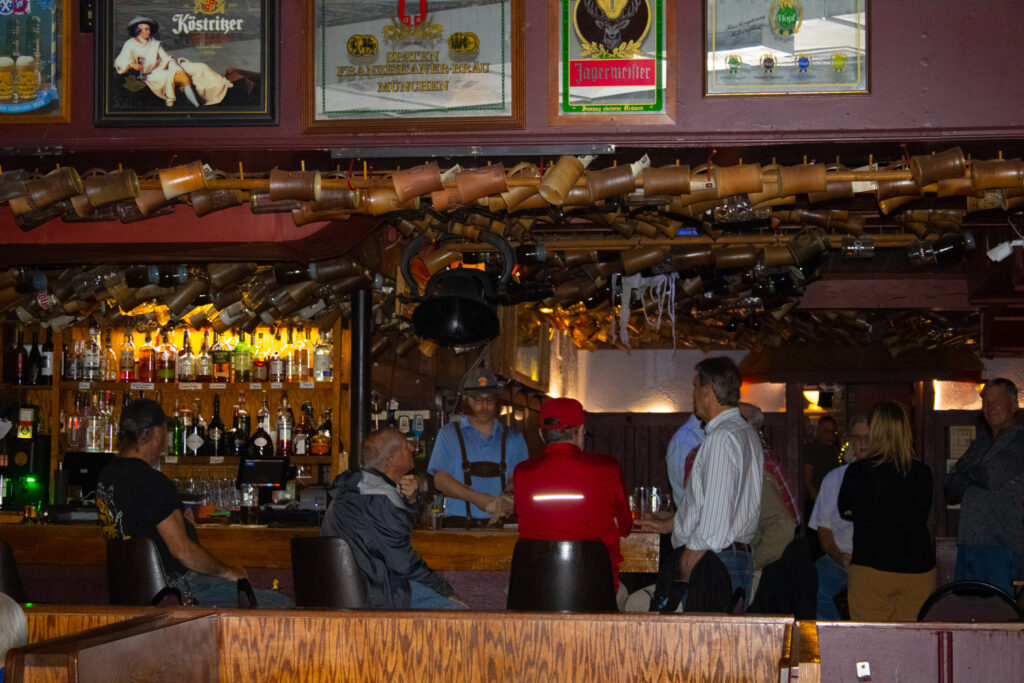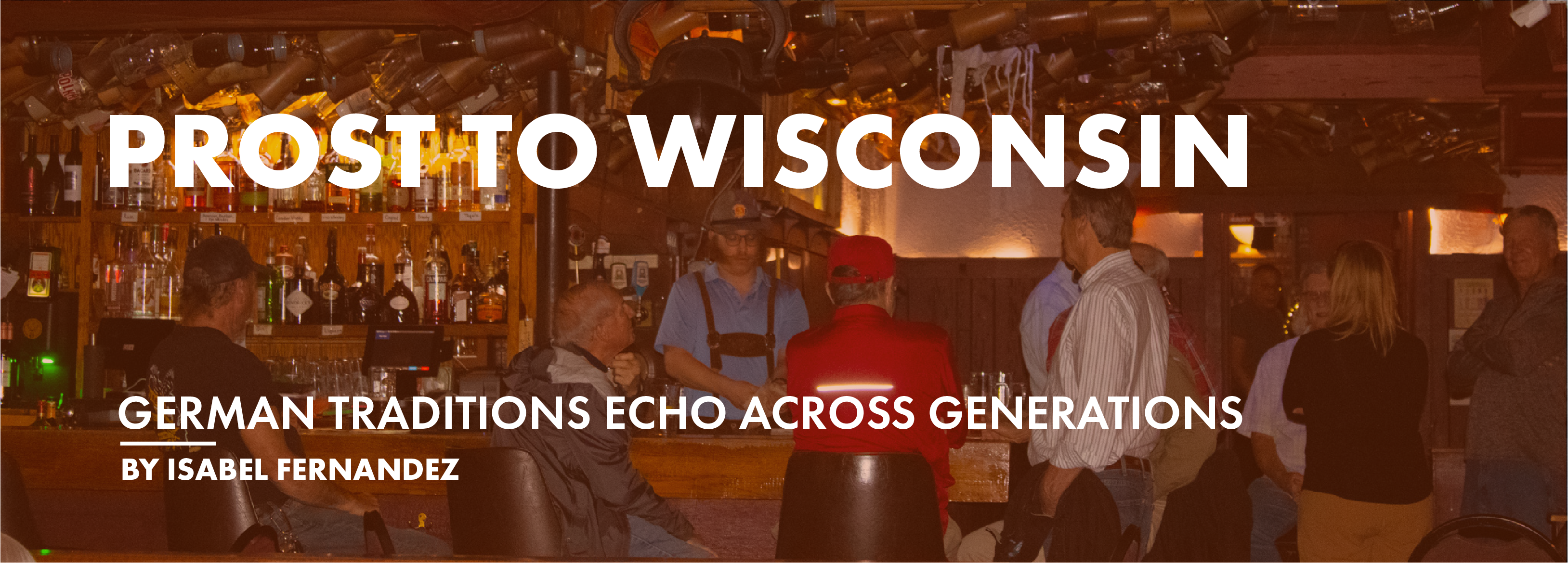In October, Milwaukee Bucks superstar Giannis Antetokounmpo described his experience trying a brat for the first time in an interview with sports broadcaster Stephen Watson.
“Does it taste the same?” the Greece-born Antetokounmpo said he wondered after confusing it with a hot dog.
Antetokounmpo shared this momentous occasion on the social media platform X, formerly known as Twitter, with the caption, “How come no one ever told me about brats?”
Despite living in Milwaukee for 10 years, a city with major German influence, it’s hard to believe Antetokounmpo had no idea what the Wisconsin classic was. Festivals, cultural centers, dance groups and authentic German restaurants across Wisconsin have been serving up German culture — beyond the bratwurst — for years.
Wisconsinites have intertwined Old World traditions with modern-day practices to continue to keep a unique cultural blend alive — one that’s felt in every corner of the state.
According to the Wisconsin Historical Society, Germans were the largest historical group to settle in Wisconsin in the 19th century. Since the first wave of German immigration to Wisconsin in the 1850s through the third wave in the 1890s, traditional German practices have spread throughout the state, according to the Max Kade Institute for German-American Studies, a research institute at UW–Madison dedicated to researching, preserving and sharing the history of German immigration to America.
However, these cultural practices have transformed into more traditional portrayals of Germany. Traditions have become focused on beer, bratwurst, dirndls and lederhosen, and Oktoberfest. Even so, many Wisconsinites have begun to lose sight of the connection.
Today, authentic German establishments are tasked with remaining relevant so that German influence and history continue on across the state.

Where it lives
Beyond the classic Oktoberfest celebrations, Milwaukeeans flock each summer to German Fest, a festival with music, dance, foods, and other interactive games and experiences. The festival was started in 1981 by a group of German Americans who wanted to maintain culture and history, says Eric Radue, the festival president.
Many of the founders of German Fest had come to Wisconsin after World War II, which allowed them to integrate real, familiar traditions into the festival, Radue says. The “old” Germans, who had been in Wisconsin for a few generations, were intertwined with the “new,” bringing traditional practices together to curate an authentic and traditional festival in the heart of the city, he says.
“It’s a balancing act of trying to maintain traditions, while also modernizing them,” Radue says. “Either through use of multimedia or embracing other traditions that come over from Germany as we continue to mix.”
Even so, German Fest follows strict guidelines to ensure its events, dishes and performances accurately reflect traditional German cultural practices. When considering what events to include, Radue says the group always starts with tradition.
For the past 10 years the festival has had races featuring dachshunds, a traditional German breed, folk dancing and a lumberjack championship called timber sports in partnership with the equipment manufacturer STIHL, Radue says.
The folk dancing groups come from around different regions of Germany to showcase the country’s culture beyond Bavaria. The festival’s cultural pavilion allows more than 30 clubs to set up booths to share and educate visitors on regional German culture, Radue says.
German Fest isn’t alone in working to preserve German heritage in Wisconsin. Historical establishments, such as the Essen Haus in Madison, which has been around for almost 40 years, and Mader’s in Milwaukee, a mainstay for over 120 years, turn back time for customers by curating traditional experiences reminiscent of German practices from the 19th and early 20th centuries.
“September, we do our Oktoberfest and you’ll fill the parking lot,” says Neal Hansen, general manager at Essen Haus. “In the spring we do a Maifest, with a Maypole, and you get folk dancers to show kids how to do the Maypole dance.”
These institutions are instrumental in reminding Wisconsinites where some favorite foods and drinks came from — and of another era. Curating these historic experiences for customers is not only entertaining but reminds modern-day Wisconsinites of the state’s German roots.
Menus include a range of traditional cuisine from potato pancakes and applesauce, jägerschnitzel, giant pretzels with mustard, to pork shank and Wiener schnitzel with spaetzle. The walls are lined with decorations of steins and biergartens that serve various German beers and curate an authentic space for groups to gather and enjoy. At the Essen Haus, the Madison Maennerchor, the oldest German men’s choir in Wisconsin, played lively polka music during Essen Haus’s Oktoberfest celebration.
“It’s energetic, it’s fun, but it’s harmless, energetic fun,” Hansen says. “Kinda hard to get into a fight to a beer barrel polka.”
Viktorija Bilic, an associate professor at UW–Milwaukee, says Germany today is more than polka music, bratwurst, beer, and people dressed in dirndls and lederhosen. However, these practices still stand as landmarks for what was brought over when Germans first largely immigrated to Wisconsin.
“Stereotypical would be in 2017, a new restaurant opened, and they were just pretending to be a historical German restaurant,” Bilic says. “These restaurants were founded in the mid-19th century. They have been here for 100 years or longer. I really see it as going back in time.”
Radue says if German Fest resembled modern-day Germany, it would be a lot like Summerfest. Instead, Radue and his team pick a time frame to center the event around to produce a slice of life based on early German cultural practices.
Where we are today
Today, German Fest struggles with how to connect with and attract younger generations to its events, Radue says. Integration of biergartens and folk dancing groups have been a strong engine for bringing younger audiences to the festival, Radue says.
“It is probably the issue that all the ethnic groups have in front of them,” Radue says.
Professor David Coury, a professor of humanities and German at UW–Green Bay, says that over time, these “traditional” German connections will become more stereotypical and less authentic.
“It’ll become more historical markers, monuments, festivities. And that’s OK, too,” Coury says. “The country changes, and there are new groups of people and new things that people are interested in. I do think it’s important that it not be forgotten.”

How to spot it
Traditional German practices continue to transform. Traditions become focused on beer, bratwurst, dirndls, lederhosen and Oktoberfests, because these have been the cultural aspects Americans associate with Germany, even if it is primarily southern Germany.
“It’s natural these types of cultural traditions change,” Coury says. “For better or for worse, it gets distilled down to some of these clichés and stereotypes where people can have fun and enjoy it.”
However, German influence is preserved in other ways.
For instance, Coury noticed when he first came to Wisconsin, people would use the phrase, “Are you coming with?” While confused at first, he soon realized it was a direct translation of a German phrase, “Kommst du mit.” Another common phrase is, “I’m here yet,” which Coury says is another passed down translation of German.
“There are little linguistic things that you can hear if you know German that are still very Wisconsin phrases,” Coury says.
Patrick Jung, a professor of history and anthropology at the Milwaukee School of Engineering, says German ties to Wisconsin cultural practices and traditions can be seen in two major areas — religion and food.
Presently, the two biggest religions in Germany are Roman Catholic and Lutheran, Jung says. Catholic and Lutheran churches were some of the first major structures to be built in Wisconsin and German phrases can be spotted on many of these buildings today.
These religious ties allow people to connect and relate to their ethnic heritage and find support within their community.
“Your great grandparents emigrated from Germany back in the 1880s or 1890s; they may have been members of the same [religious denomination] you belong to,” Jung says. “A lot of that strong ethnic German affiliation is because [of a] strong religious foundation, of strong religious affiliation that German immigrants brought with them.”
While German roots in Wisconsin are still alive, their prevalence is dwindling. There used to be 300 German clubs in Milwaukee, but now only 25 remain, Bilic says.
“I feel like a lot of Americans are always interested in where, because it’s a nation of immigrants, their family came from,” Bilic says. “So it’s definitely important to preserve that history. And it’s still here, even though it’s been 100 years since the last major German emigration happened.”
